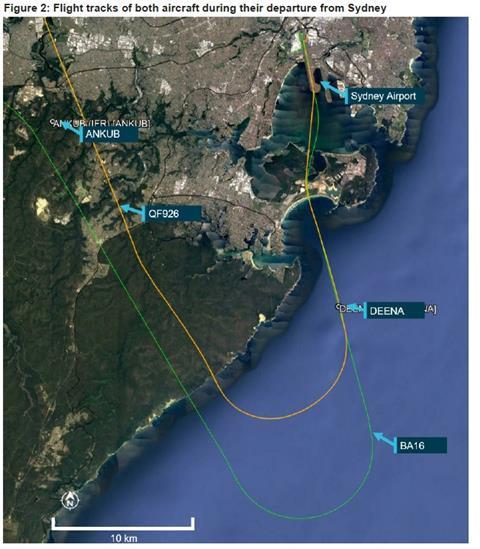Airservices Australia has redesigned a standard instrument departure (SID) out of Sydney following a loss of separation between a Boeing 787-9 operated by British Airways and an Airbus A330-200 operated by Qantas Airways.
During the 28 September 2022 incident, first the 787 (G-ZBKF, MSN38622) and then then the A330 (VH-EBK, MSN945) were cleared to use the same SID after take-off – DEENA SEVEN. The 787 departed from runway 16R at 15:08 local time, while the A330 departed shortly thereafter, according to the Australia Transport Safety Bureau (ATSB).

Both aircraft were to climb to 28,000ft via the SID, which called for aircraft to turn right towards the ANKUB waypoint having passed the DEENA waypoint and climbed above 6,000ft.
The A330, however, climbed faster than the 787, resulting in it turning inside of the other aircraft. The climb discrepancy was due to the A330 being far lighter as it was operating a domestic service to Cairns, while the 787 was operating a long-haul service to Singapore.
“During the departure, the following aircraft climbed faster than the controller anticipated and turned towards the next waypoint inside the preceding aircraft, resulting in a loss of separation,” says ATSB.
It adds: “The ATSB also found that the design of the DEENA SEVEN SID did not provide a positive method of providing separation assurance to aircraft with different performance characteristics. As the aircraft had to satisfy 2 separate conditions prior to turning, there was no way of ensuring aircraft would turn at the same distance from the airport. That is, separation could not be assured.”
In the incident, the minimum vertical separation between the two jets was 600ft, while lateral separation was 2.4nm. (4.4km). The British Airways crew subsequently reported that they had received a TCAS (traffic alert and collision avoidance system) advisory.
In response to the incident, Airservices Australia has redesigned DEENA SEVEN SID.


























